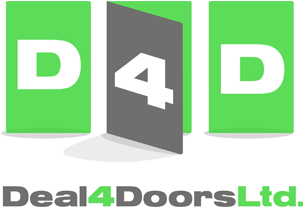Installing an external door frame is a critical project that affects your home's energy efficiency, security, aesthetics, and structural integrity. Unfortunately, even small mistakes during installation can lead to major issues down the line—think drafts, misalignment, moisture infiltration, or even safety hazards.
This article dives deep into the most frequent installation pitfalls and provides detailed solutions to ensure your door installation is a long-term success.
Why Correct Installation Is So Important
Before digging into common mistakes, it’s vital to understand why correctly installing an external door frame matters:
1. Structural Integrity
The frame holds the weight of the door, resists wind loads, and connects it to the structure. A poorly installed frame may warp, pull away from the wall, or compromise the door's function over time.
2. Weather Protection & Insulation
External doors are key in maintaining indoor comfort by keeping weather and pests out. A badly sealed frame can contribute to drafts, higher energy bills, and interior damage due to moisture.
3. Operational Longevity
A well-aligned door operates smoothly—no sticking, sagging, or unnecessary stress on hinges and locks, which extends the life of all components.
4. Security & Safety
A secure, correctly installed frame supports strong hardware and locking systems. Gaps or weak anchoring can make forced entry easier or even fail to comply with building regulations.
5. Aesthetic Value
A properly fitted door enhances curb appeal and finishes the look of your home. Even small misalignments or gaps can throw off the visual balance of your entryway.
Common Mistakes & Advanced Tips
1. Failing to Ensure the Frame Is Level & Square
Issue: If the frame isn’t perfectly level and square, the door may not close properly, stay open on its own, or rub against the frame. This accelerates wear or even warps the door.
Solution Tips: Use a quality spirit level, measure diagonals, and shim with non-compressible materials. Adjust continuously as you secure fasteners.
2. Measuring Inaccurately
Issue: Incorrect measurements can lead to poor fits or unusable materials.
Solution Tips: Measure width, height, and depth. If you're installing space-saving solutions like pocket doors, review this guide on what is a pocket door.
3. Skipping Sealant and Insulation
Issue: Gaps left around the frame can allow moisture, pests, or drafts into your home.
Solution Tips: Apply weatherproof sealant, fill voids with foam insulation, and use flashing tape around the sill and header areas for protection.
4. Using Wrong Fasteners
Issue: Weak or inappropriate fasteners can cause the frame to shift or become loose over time.
Solution Tips: Use corrosion-resistant screws at regular intervals. Avoid wood nails for load-bearing or exterior components.
5. Forgetting Hardware Compatibility
Issue: Incorrect or mismatched hinges, handles, or locks can reduce performance and appearance.
Solution Tips: Use heavy-duty hinges and rated hardware. If you’re using dark finishes like black hardware, see this guide on how to maintain black door handles.
6. Overlooking Fire Safety & Security
Issue: In some settings, fire-rated frames and secure locks are essential for compliance and safety.
Solution Tips: Use frames compatible with certified fire doors like the FD30 fire door. Pair with approved locks—see this guide on types of locks for home security.
7. Ignoring Surrounding Finishes
Issue: An unfinished frame or damaged skirting board can affect durability and appearance.
Solution Tips: Finish trims, seal joins, and learn how to paint and maintain skirting boards properly for a complete, moisture-resistant look.
8. Neglecting Additional Entryway Features
Issue: A frame alone may not meet your full lifestyle needs—ventilation, lighting, and bug control matter too.
Solution Tips: Consider screen options, and explore this guide on choosing the best fly screen and doors for your home.
Professional Examples & Case Studies
Example 1: Minor Sag Causing Major Draft
A misaligned frame led to a dragging door and water ingress. Realignment and foam sealing fixed the problem and improved insulation.
Example 2: Fire-Rated Door Compliance Failure
A landlord failed an inspection by installing a door without matching it to an FD30-rated frame. Rework was needed to meet code and ensure safety.
Example 3: Paint and Trim Neglect
A DIYer skipped sealing trim and left raw wood exposed. Moisture caused paint failure within months. Proper painting and caulking resolved it.
Comprehensive Installation Checklist
- ☐ Measure height, width, and depth accurately
- ☐ Confirm opening is level and square
- ☐ Shim with stable, non-compressible materials
- ☐ Use exterior-grade screws spaced every 30cm
- ☐ Seal all frame edges and gaps with weatherproof caulk
- ☐ Use flashing tape or drip edge protection
- ☐ Choose fire-rated or security-rated components if needed
- ☐ Apply paint and finish trims with flexible caulk
- ☐ Consider additional airflow or screen features
- ☐ Maintain surrounding hardware and surfaces regularly
Final Thoughts
Installing an external door frame correctly is essential for safety, insulation, and aesthetics. By avoiding the common mistakes outlined above, you’ll ensure a long-lasting, secure, and attractive result. Whether you're DIY-ing or working with a contractor, precise measurement, solid materials, and attention to finishing details make all the difference.
For more tips, guides, and quality door components, visit the Deal4Doors blog section.





